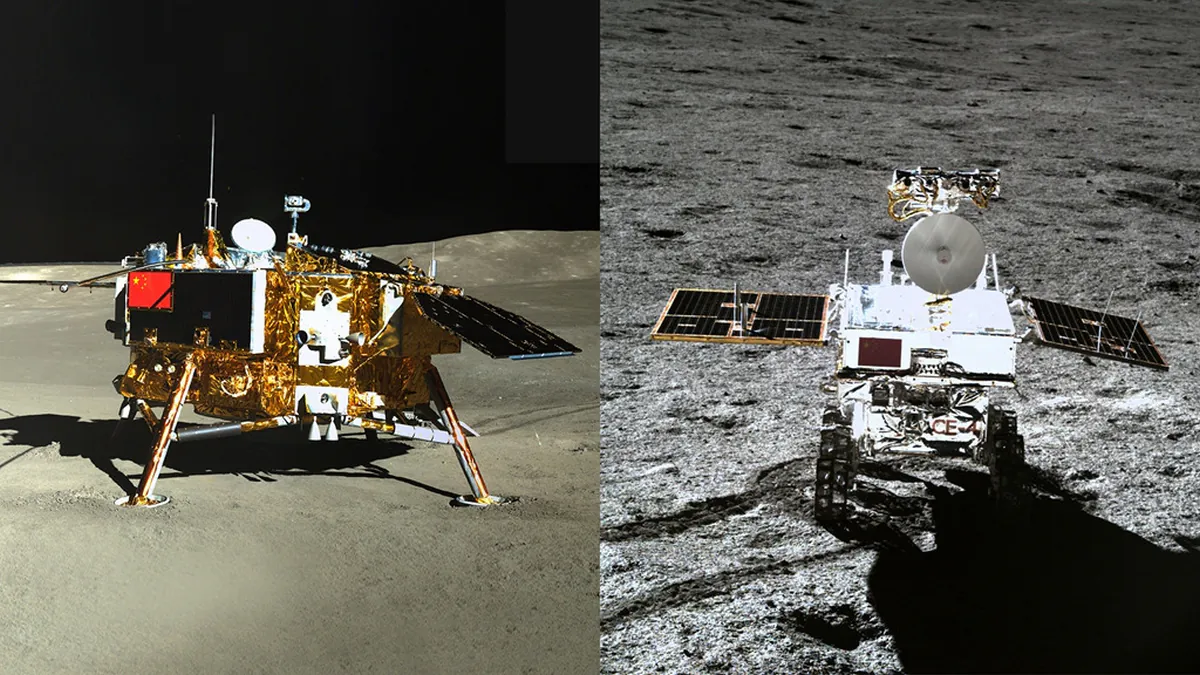
Samples from the lunar Oceanus Procellarum, an ancient mare basalt whose name translates as “Ocean of Storms,” can help identify the source of lunar water.
In 2020, for the first time in real time, the Chinese lunar spacecraft Chang’E-5 confirmed the presence of a water signal in basalt rocks and soil using on-board spectral analysis. This conclusion was confirmed by laboratory analysis of samples returned by the device in 2021. Now the Chang’E-5 team has determined where the water came from.
“For the first time in the world, the results of laboratory analysis of lunar return samples and spectral data from in-situ lunar surface surveys were used jointly to examine the presence, form and amount of ‘water’ in lunar samples,” said co-corresponding author Li Chunlai from the National Astronomical Observatories of the Chinese Academy of Sciences (NAOC). “The results accurately answer the question of the distribution characteristics and source of water in the Chang’E-5 landing zone and provide a ground truth for the interpretation and estimation of water signals in remote sensing survey data.”
Chang’E-5 did not observe lunar rivers or springs, but rather identified an average of 30 hydroxyl parts per million in rocks and soil on the lunar surface. These molecules, consisting of one oxygen atom and one hydrogen atom, are the main component of water, as well as the most common result of the chemical reaction of water molecules with other substances. Although hydroxyl is what Li called the “weak end of lunar hydration features,” it is for water what smoke is for fire: evidence.
The samples were collected in the hottest part of the lunar day, at a temperature close to 93.3°C, when the surface would be the driest. This time also coincides with light solar winds, which can contribute to hydration at fairly high power.
Even in such dehydrated conditions, hydration signals still appeared – so where did they come from?
A small part appeared in the vitreous material formed by the influence of solar winds on the lunar surface, as in the sample from Apollo-11, collected in 1971 and studied in the early 2000s. But the Chang’E-5 sample contained only about a third of the amount of glass containing hydroxyl formed by the solar wind compared to the Apollo sample.
This suggests that the solar wind still contributes, albeit weakly, to the hydroxyl content observed at the Chang’E-5 landing site. The main part of the hydroxyl in the Changye-5 samples was contained in apatite, a crystalline, phosphate-rich mineral that is naturally present on both the Moon and the Earth.
“This excess hydroxyl is indigenous, demonstrating the presence of lunar-originated internal water in the Chang’E-5 lunar samples, and that water played an important role in the formation and crystallization of the late lunar basaltic magma,” Li said, referring to the composition of Chang’E-5 landing site in the mare basalt of Oceanus Procellarum.
You can also help Ukraine fight with Russian occupants via Savelife or via an official page of the National Bank of Ukraine.
Read also:
Leave a Reply